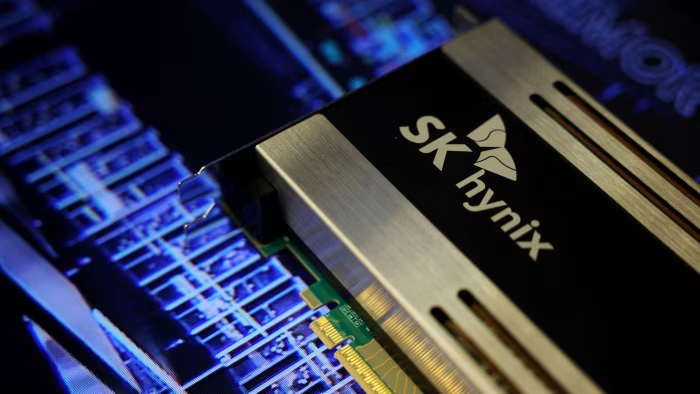Unlock the Editor’s Digest for free
Roula Khalaf, Editor of the FT, selects her favourite stories in this weekly newsletter.
AI bubble fears are getting louder. Stocks tied to artificial intelligence continue to rise, yet every earnings cycle brings intensifying anxiety, especially around Nvidia and US tech giants such as Microsoft, Alphabet and Meta. Investors are scanning every signal for the earliest sign that the boom could be starting to unwind.
But they are looking in the wrong place. If the AI cycle is going to crack, the first signs will come from Asia.
Today’s AI mania certainly resembles past tech bubbles. There is intense hype, generous venture funding and a clear divide between investors who see an unsustainable surge in spending and those who insist that this is real transformation, big enough to justify aggressive investment.
What is different this time is the location of the bottlenecks. The most constrained and most profitable links in the AI supply chain are now in Asia. High-bandwidth memory chips, advanced chip packaging and cutting-edge chipmaking capacity, all essential for powering AI models, are overwhelmingly concentrated in Korea and Taiwan.
SK Hynix and Samsung together produce about 80 per cent of the world’s high-bandwidth memory, while TSMC controls nearly three-quarters of the global contract chipmaking market. Also, unlike previous tech cycles, which were largely defined by software, the global AI boom depends critically on the supply of these physical components.
Take SK Hynix, the world leader in high-bandwidth memory, the ultrafast memory chips used to train and run large AI models. Nvidia’s most advanced AI chips rely heavily on these chips and each new generation requires more quantities of them. Last month, SK disclosed that its entire production of these chips had already been sold out until the end of 2026 with supply expected to remain tight compared with demand into 2027.
It is the same story at TSMC. Its advanced packaging technology that integrates Nvidia’s AI chips with large stacks of high-bandwidth memory chips has become essential to AI chip production. TSMC’s capacity for this technology remains in high demand with Nvidia alone reported to have secured more than 70 per cent of that capacity for this year.
Taken together with record earnings at Korean and Taiwanese chipmakers, it appears on the surface to be clear evidence of booming AI demand.
Yet in chip supply chains, unusually strong demand often signals a cycle peak, not lasting growth. Chip order backlogs typically form during periods of scarcity, as they did last year, when customers place far more orders than they actually need. Suppliers, seeing only the order log, interpret this as sustained demand and expand production capacity. But as supply normalises, those customers start to pull back, reducing or deferring the volumes previously committed to.
Global chip revenue is expected to grow just 15 per cent this year, according to IDC, a rate far below previous cycles of industry growth. That modest figure, given the scale of AI hype, signals that the current boom is concentrated in a narrow segment of the chip supply chain rather than the industry as a whole. That also makes any slowdown in AI growth easier to spot.
Meanwhile, the US tech groups leading the AI push, where bubble fears are loudest, are not where the real risk lies. Microsoft, Alphabet and Meta are spending aggressively on infrastructure for the technology, but AI is not their main profit driver. Their revenue bases remain diversified across advertising, cloud and productivity software. Operating margins do not depend on factory capacity utilisation. Capital spending can be redirected if the financial case for AI weakens.
That is not the case for Asia’s chipmakers. AI and high-performance computing-related products are now their main growth engines. At TSMC, for example, high-performance computing made up 57 per cent of net revenue in the third quarter. Because chipmaking depends on volume and carries heavy fixed costs, even moderate dips in demand can show up quickly in earnings.
This sensitivity is exactly why chipmakers’ data will matter so much in assessing the true state of AI demand going forward. It is one of the few places where results cannot be smoothed over with long-term product visions. AI may well reshape the economy, but its foundations remain tied to the realities of long-standing chip cycles.
june.yoon@ft.com
